When it comes to purchasing a vehicle, the warranty coverage offered by manufacturers plays a pivotal role in shaping consumer confidence and influencing buying decisions.
A warranty essentially acts as a promise of quality and reliability, assuring owners that if something goes wrong with the vehicle within a specified timeframe, the manufacturer will step in to cover repair costs.
This coverage can significantly reduce the total cost of ownership and protect buyers from unexpected expenses related to defects or malfunctions.
However, warranty terms vary widely across different vehicle makes and models, with some manufacturers offering exceptionally generous warranties that stretch for a decade or more, while others provide relatively minimal protection that may leave owners exposed to costly repairs after just a few years.
Understanding the landscape of vehicle warranties is critical, not only for first-time buyers but also for seasoned car owners who want to maximize their investment and minimize potential financial risks. In today’s highly competitive automotive market, warranty offerings have become a key differentiator among brands and models.
Consumers often weigh these terms heavily alongside factors such as price, performance, fuel economy, and styling. A comprehensive and long-lasting warranty can serve as a compelling value proposition, signaling a manufacturer’s confidence in its products and commitment to customer satisfaction.
Conversely, minimal warranty coverage can raise red flags about a vehicle’s reliability or lead to higher ownership costs down the road. This article aims to provide an insightful examination of warranty coverage by spotlighting five vehicles renowned for their generous warranty terms and five others that offer comparatively minimal warranty protection.
Through this comparison, readers can gain a clearer understanding of how warranty length and coverage scope impact ownership experience, maintenance costs, and overall satisfaction.
From mainstream brands like Hyundai and Kia, which have revolutionized warranty standards with their decade-long powertrain guarantees, to luxury automakers such as BMW and Mercedes-Benz, which tend to offer shorter warranties despite premium pricing, the diversity in warranty policies is striking.
Beyond just the duration, warranty quality encompasses the range of components covered, roadside assistance availability, corrosion protection, and whether the warranties are transferable to subsequent owners. These elements contribute to the overall peace of mind and financial security that come with owning a vehicle.
For example, a long powertrain warranty can save thousands in potential repairs for expensive components like engines and transmissions, while robust roadside assistance programs can prevent inconvenience during unexpected breakdowns.
It’s also worth considering how warranty policies reflect broader manufacturer strategies and reputations. Brands that aggressively extend warranty coverage often do so to build trust with consumers, improve brand loyalty, and challenge competitors on value rather than just pricing.
In contrast, some manufacturers rely on established brand prestige or perceived performance advantages, offering more limited warranties as part of their business model.
This dichotomy highlights the evolving priorities in the automotive industry, where consumer expectations for reliability and cost control are increasingly shaping product offerings.
Ultimately, this article provides not just a list of vehicles with the best and worst warranty terms but also contextualizes why warranty coverage matters so much in the modern car-buying process.
Whether you prioritize comprehensive protection, worry about resale value, or simply want to avoid unexpected repair bills, understanding warranty nuances will help you make a more informed decision. Read on to discover which vehicles stand out for their outstanding warranty commitments and which ones might leave you needing to plan for additional expenses after purchase.
ALSO READ: 5 Cars That Never Have Software Glitches and 5 That Need Constant Updates
5 Vehicles with the Most Generous Warranty Terms
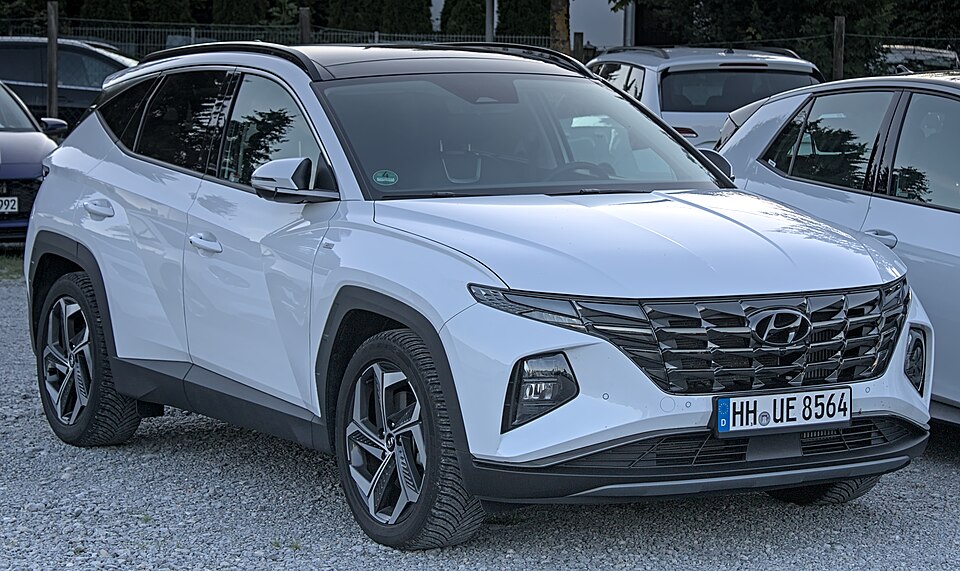
1. Hyundai Tucson
Hyundai’s Tucson stands out in the compact SUV segment, not only for its modern styling and competitive pricing but also because of its exceptional warranty coverage, which continues to set benchmarks in the industry.
The centerpiece of its warranty program is the 10-year/100,000-mile powertrain warranty—a remarkable offering that provides extensive protection for the engine, transmission, and other major drivetrain components.
This long-term coverage is designed to instill confidence in buyers who often consider the durability and repair costs of vehicles in this class. Hyundai’s commitment to covering the most expensive parts of the vehicle for such a prolonged period differentiates the Tucson from many rivals who limit powertrain warranties to five or six years.
This warranty length means owners can expect fewer financial surprises if a significant drivetrain failure occurs years into ownership, making it ideal for those who plan to keep their vehicles well beyond the typical five-year horizon.
Moreover, the Tucson’s bumper-to-bumper warranty, covering virtually every component aside from wear items, spans five years or 60,000 miles.
This generous basic coverage period exceeds many competitors, providing protection for electronic components, air conditioning, suspension, and infotainment systems, which can sometimes be sources of costly repairs.
Many manufacturers offer a bumper-to-bumper warranty of only three years or 36,000 miles, so Hyundai’s extended terms give the Tucson a significant competitive edge in overall value.
The lack of deductible on warranty repairs further enhances the customer experience, as owners can receive covered repairs without additional out-of-pocket expenses, reducing the financial burden and complexity often associated with warranty claims.
Hyundai also includes roadside assistance for the same duration as the basic warranty, giving Tucson owners access to emergency towing, flat tire changes, lockout assistance, and fuel delivery. These benefits contribute to peace of mind for drivers who frequently travel long distances or live in less urbanized areas, where immediate access to help may be limited.
The Tucson’s corrosion warranty lasts for 7 years with unlimited mileage, a notably long term that addresses the growing concern of rust and body deterioration in areas with harsh winters or coastal environments.
Such coverage ensures that the vehicle’s structural integrity and appearance are protected against costly rust repairs, which can be a significant issue for vehicles exposed to salt and moisture.
Finally, Hyundai’s warranty philosophy is supported by a broader corporate focus on quality and customer satisfaction. This comprehensive warranty reflects confidence not only in the Tucson’s build quality but also in Hyundai’s ability to back its products with excellent service networks and efficient repair processes.
The warranty is transferable to subsequent owners, which positively impacts the vehicle’s resale value, giving buyers an additional incentive to choose the Tucson. By offering such extensive and customer-friendly warranty coverage, Hyundai positions the Tucson as a reliable and cost-effective choice in the increasingly competitive compact SUV market.
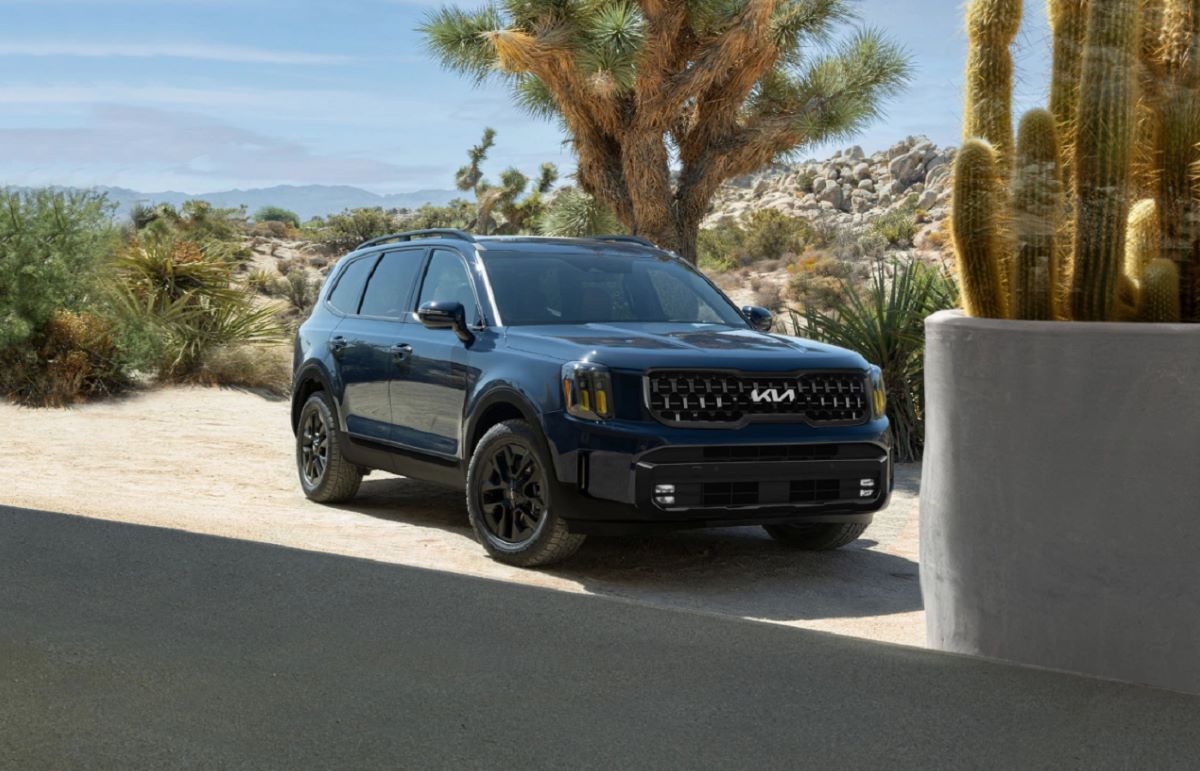
2. Kia Telluride
Kia’s Telluride is a midsize SUV that quickly gained popularity for its spacious interior, upscale features, and impressive value proposition—one of the key components of which is its industry-leading warranty coverage.
Kia, like its corporate sibling Hyundai, offers a powertrain warranty of 10 years or 100,000 miles on the Telluride, setting a high standard in a segment where competitors often provide less coverage.
This warranty protects the engine, transmission, and other powertrain components from defects, thereby reducing potential long-term ownership costs and underscoring Kia’s confidence in the Telluride’s mechanical durability.
Such extended coverage allows owners to enjoy their vehicle with fewer worries about expensive repairs, especially for a family-oriented SUV that may accumulate high mileage over the years.
The Telluride also benefits from a 5-year/60,000-mile bumper-to-bumper warranty, which covers almost every component of the vehicle, including electrical systems, suspension parts, infotainment, and more. This warranty length is considerably longer than what many other midsize SUVs offer, reflecting Kia’s commitment to providing exceptional ownership value.
Having such coverage protects owners against unexpected mechanical or electrical failures that might otherwise lead to costly repairs. The inclusion of a no-deductible policy on covered repairs also makes the warranty more attractive, as it removes financial barriers for customers to utilize their coverage fully.
Additionally, Kia offers 5 years or 60,000 miles of roadside assistance, a valuable benefit for owners who travel frequently or may encounter emergencies far from home. This service covers towing, lockout assistance, battery jump-starts, and more, enhancing the Telluride’s appeal for buyers seeking reliability beyond just mechanical performance.
The corrosion warranty, lasting 5 years with unlimited mileage, protects the vehicle’s body and structural components against rust and corrosion damage, which can be a significant concern in climates with heavy snow, salt, or moisture exposure. This extended corrosion coverage reassures buyers that the vehicle’s exterior and frame will be safeguarded against premature deterioration.
Kia’s warranty coverage is a crucial part of its broader strategy to reposition itself as a premium brand with an emphasis on quality, durability, and customer care. The Telluride’s warranty helps reinforce this message by ensuring owners receive substantial protection without hidden costs or complicated terms.
This warranty strength contributes to high owner satisfaction ratings and has played a role in the Telluride’s impressive sales growth. The transferability of the warranty to subsequent owners also enhances the vehicle’s resale value, providing added assurance for those who may choose to sell the vehicle down the road. Overall, Telluride’s generous warranty package is a cornerstone of its market appeal.
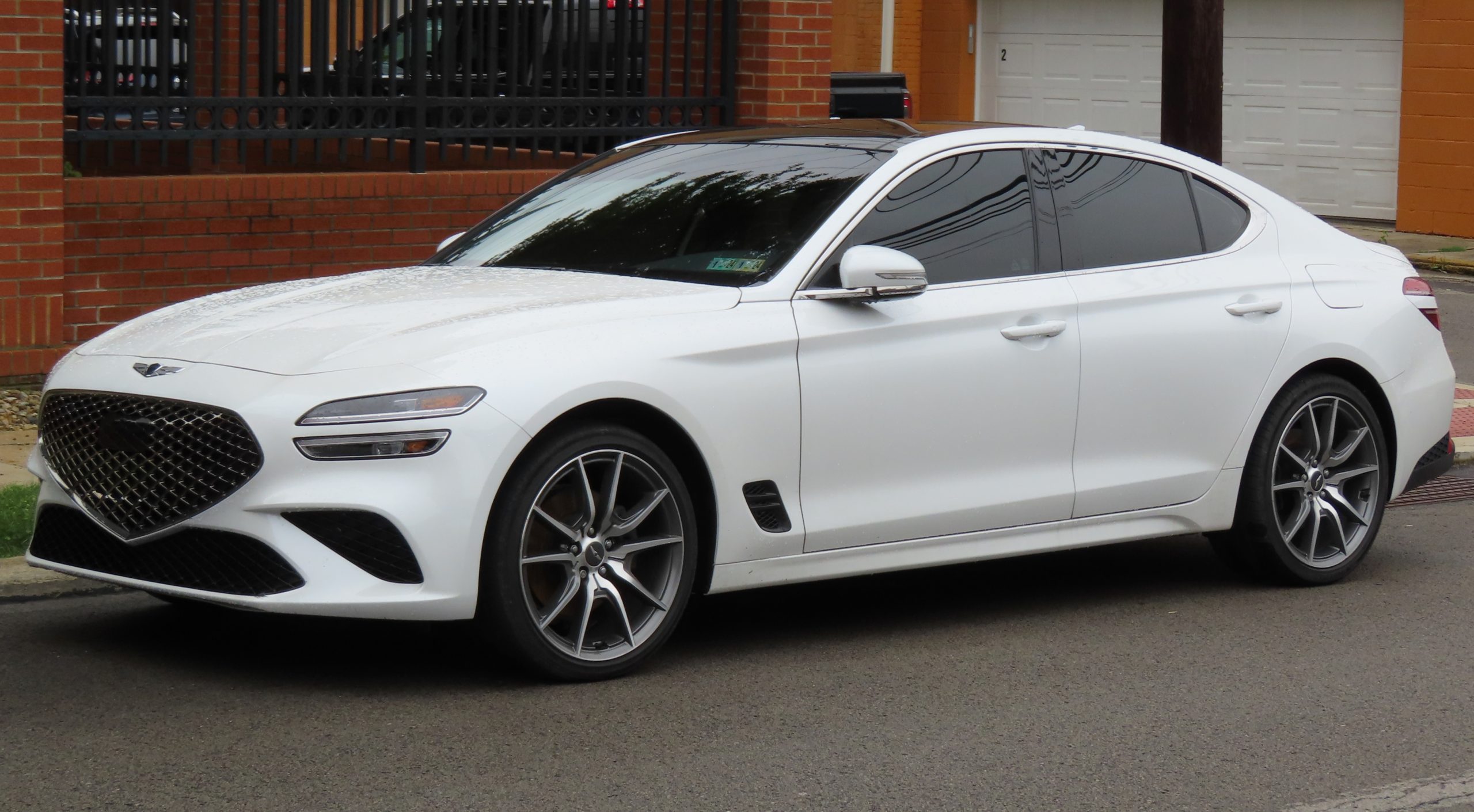
3. Genesis G70
Genesis, Hyundai’s luxury division, is redefining expectations for warranty coverage in the premium segment with the G70 luxury sedan. Traditionally, luxury brands have offered shorter warranties, with many limited to 4 years or 50,000 miles, but Genesis breaks this mold by providing a powertrain warranty that extends 10 years or 100,000 miles.
This approach is nearly unheard of in the luxury market, where repair costs tend to be high and warranty periods are often shorter. The G70’s extended warranty coverage signals Genesis’s confidence in its engineering and reliability and offers luxury car buyers peace of mind that often comes with mainstream brands, but rarely with premium marques.
The bumper-to-bumper warranty on the G70 lasts 5 years or 60,000 miles, which is generous by luxury standards and compares favorably with many mainstream vehicles.
This broad coverage protects owners from a wide range of potential issues, including problems with electronics, safety systems, power accessories, and infotainment components, all of which are increasingly complex in luxury vehicles. Such comprehensive coverage reduces the anxiety associated with owning a luxury car, where repairs can be significantly more expensive than on non-luxury models.
Genesis complements this warranty with premium roadside assistance benefits, including 24/7 towing, flat tire changes, lockout service, and trip interruption reimbursement. These services can be a lifesaver for luxury car owners who expect a hassle-free ownership experience.
The corrosion warranty for the G70 extends 7 years with unlimited mileage, longer than what many competitors in the luxury market provide. This coverage helps maintain the vehicle’s aesthetic appeal and structural soundness, which are important for preserving resale value and owner satisfaction in this class.
Further enhancing ownership experience, Genesis provides complimentary scheduled maintenance for the first three years or 36,000 miles, which lowers the total cost of ownership by reducing maintenance expenses.
The warranty terms and additional services reinforce Genesis’s strategy to offer luxury vehicles that combine high-quality craftsmanship, advanced technology, and customer-focused support. The G70’s warranty coverage is a major selling point, especially for buyers who want the prestige and performance of a luxury sedan without the anxiety of excessive repair costs.
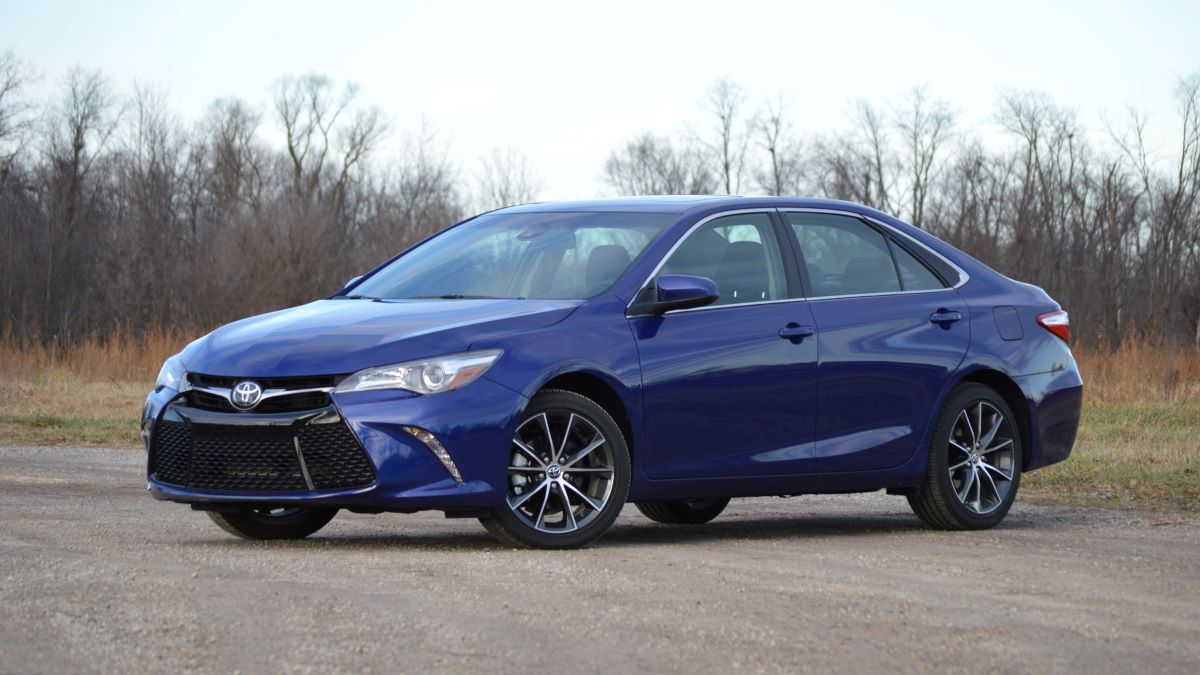
4. Toyota Camry
The Toyota Camry is a staple in the midsize sedan segment, renowned for its reliability, resale value, and solid ownership experience. While Toyota’s warranty terms are more conservative compared to Hyundai or Kia, they reflect the brand’s confidence in the vehicle’s quality and low likelihood of major defects.
The basic warranty covers 3 years or 36,000 miles, which is typical in the industry and covers most repairs related to manufacturing defects. Though this is shorter than some competitors’ bumper-to-bumper coverage, Toyota’s reputation for reliability means many owners experience fewer repair needs during this period.
Toyota’s powertrain warranty on the Camry extends to 5 years or 60,000 miles, providing important protection for the engine, transmission, and related components.
While not as extensive as the 10-year warranties offered by Hyundai or Kia, this coverage is still meaningful in shielding owners from costly powertrain repairs that could arise within the first several years of ownership. Toyota’s powertrain systems are known for durability, which helps offset the shorter coverage period compared to some newer competitors.
Additional coverage includes roadside assistance for 2 years or 25,000 miles, which is more limited than many rivals but still provides basic emergency services like towing, battery jump-starts, and lockout assistance.
The Camry’s corrosion warranty lasts 5 years with unlimited mileage, helping protect against rust and deterioration—a key concern for vehicles used in harsh climates or on salted roads. Toyota also benefits from a widespread dealership and service network, ensuring warranty repairs and maintenance can be handled efficiently.
The Camry’s warranty is bolstered by Toyota’s overall brand reliability and resale value. Many owners experience fewer repairs, making the shorter warranty less of a drawback.
Additionally, Toyota offers extended warranty plans and certified pre-owned programs with enhanced coverage, giving buyers options to tailor their protection. The combination of solid factory warranty and well-earned reliability reputation makes the Camry a consistently smart choice for buyers prioritizing peace of mind and long-term value.
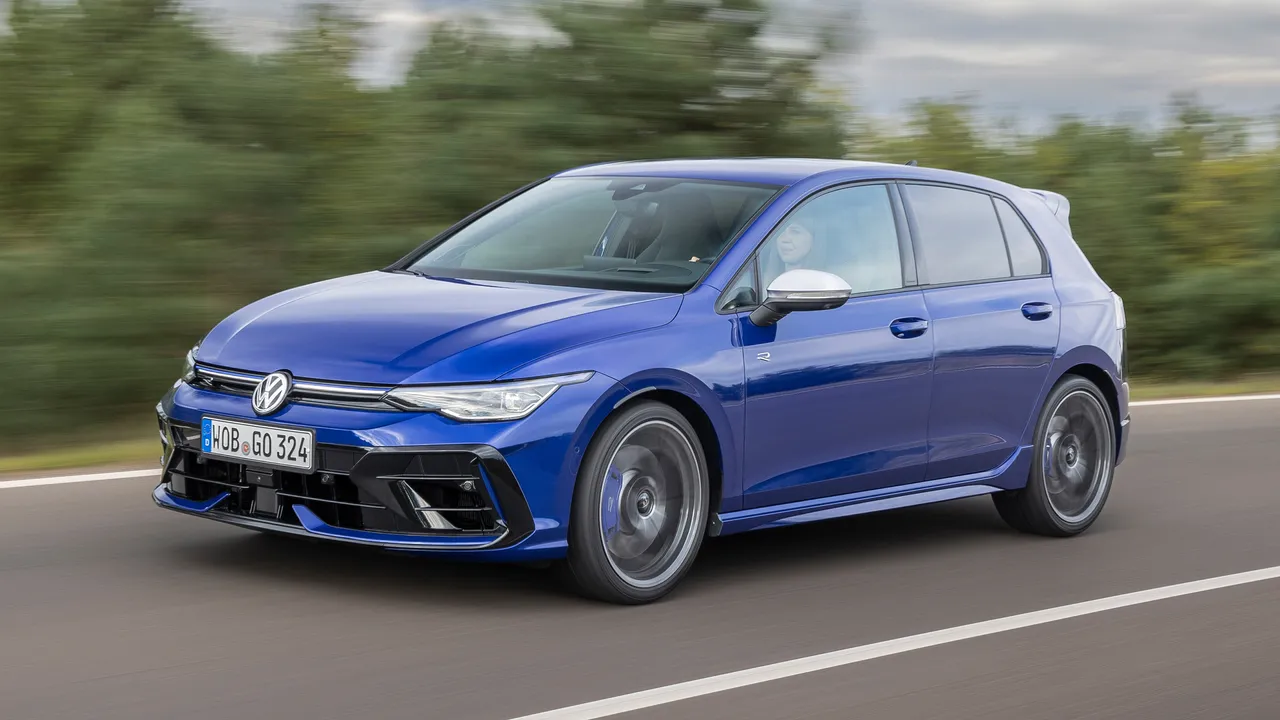
5. Volkswagen Golf
The Volkswagen Golf is a compact hatchback with a long-standing reputation for European craftsmanship, driving enjoyment, and solid build quality. Its warranty package reflects Volkswagen’s efforts to offer competitive coverage in a market where European brands often have shorter warranty terms.
The Golf’s basic warranty covers 4 years or 50,000 miles, which is longer than the typical 3 years or 36,000 miles offered by many competitors. This additional year and mileage give Golf owners extra confidence that most parts will be covered for a significant period after purchase.
Unlike many vehicles where the powertrain warranty is separate, the Golf includes powertrain coverage within its bumper-to-bumper warranty, simplifying the ownership experience and providing consistent protection for engine and transmission components. This integration means owners do not have to navigate multiple warranty terms, making claims and understanding coverage more straightforward.
Volkswagen supplements this with roadside assistance for 3 years or 36,000 miles, offering services such as towing, emergency fuel delivery, and lockout assistance. While this is shorter than some competitors’ roadside coverage, it provides valuable support during the initial years of ownership when breakdown risks are higher.
The Golf also features a corrosion warranty lasting 7 years, a relatively long duration that addresses the risk of rust—a common concern for hatchbacks exposed to various weather conditions and road treatments.
The Golf’s warranty package positions it well against competitors in its segment by offering a combination of extended basic coverage and corrosion protection.
Volkswagen aims to assure buyers that the vehicle is built to last and backed by strong customer support. Although some rivals provide longer powertrain warranties, the Golf’s overall warranty terms balance length and comprehensiveness, making it an attractive option for buyers seeking European style and reliability without excessive risk.
5 Vehicles with Minimal Warranty Coverage
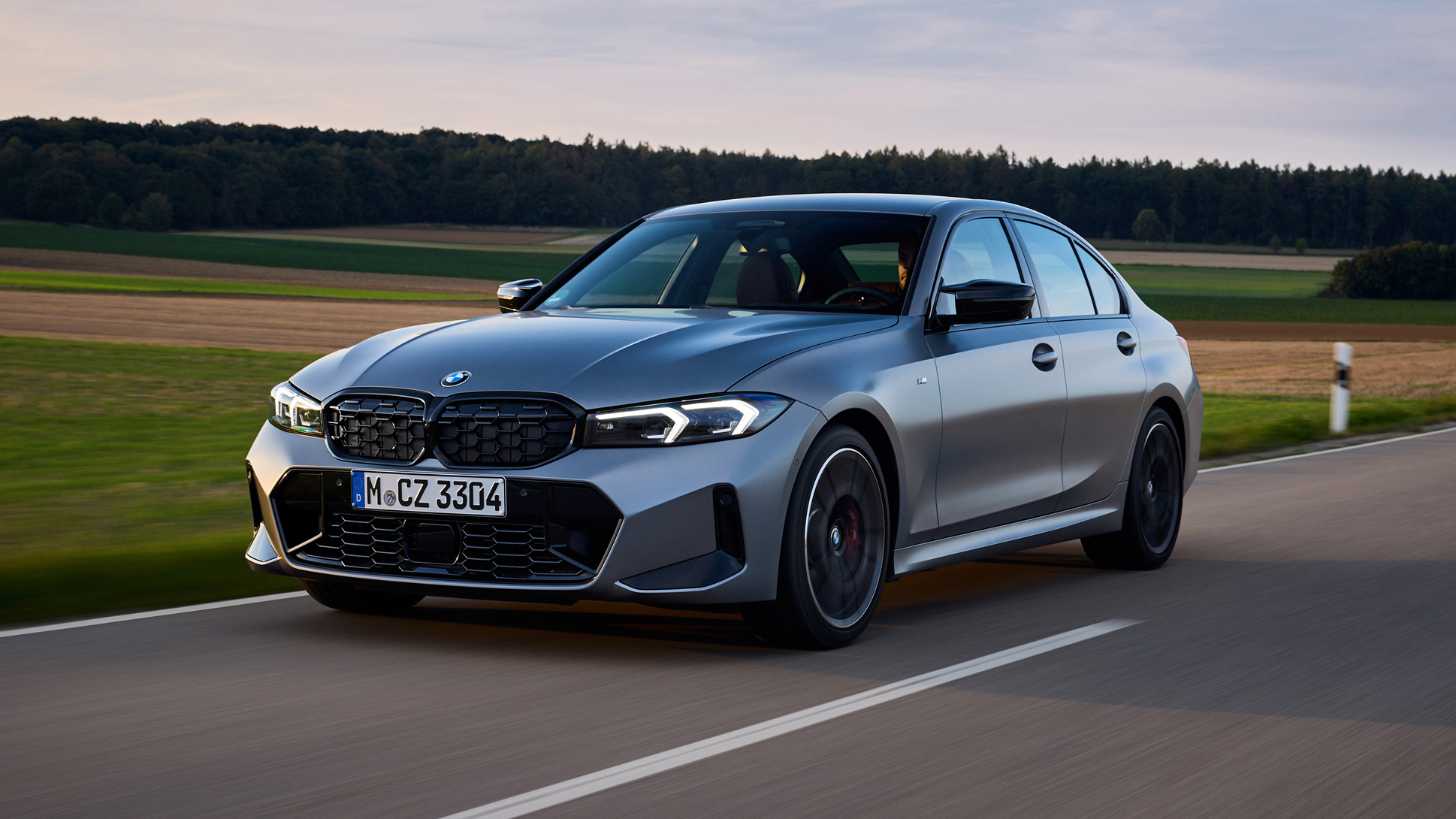
1. BMW 3 Series
The BMW 3 Series, a staple in the luxury sports sedan market, is renowned for its dynamic driving experience, high-quality craftsmanship, and premium features. However, when it comes to warranty coverage, it tends to lag behind many mainstream competitors and even some luxury rivals in terms of generosity and duration.
BMW provides a basic bumper-to-bumper warranty of just 4 years or 50,000 miles, which is shorter than many non-luxury brands that often offer 5 years or more.
While this coverage includes repair or replacement of defects in materials or workmanship, it excludes wear-and-tear items and maintenance services, which can lead to significant out-of-pocket expenses for owners over time.
Moreover, the BMW 3 Series offers a powertrain warranty aligned with the basic coverage of 4 years or 50,000 miles, which is minimal compared to some manufacturers who extend powertrain protection up to 10 years or 100,000 miles.
Given the complexity and performance focus of BMW’s engines and transmissions, this relatively short coverage window can be a drawback, especially considering that repairs on turbocharged engines and sophisticated drivetrain components often come with a premium price tag.
For buyers intending to keep their BMWs for longer periods, this limited warranty coverage can translate into substantial maintenance and repair costs once the coverage expires.
The BMW 3 Series also comes with roadside assistance for 4 years or 50,000 miles, matching the duration of the basic warranty but shorter than some rivals that offer assistance for 5 years or more.
This roadside assistance includes towing, lockout services, flat tire changes, and fuel delivery but is only available while the vehicle is under warranty, leaving owners to potentially face higher costs or limited help after the coverage expires.
Additionally, BMW’s corrosion warranty stands at 12 years but only covers perforation rust—meaning rust that causes holes—without mileage limitation. While this corrosion coverage is impressive in length, it’s more limited in scope compared to full body corrosion warranties from other brands.
In the luxury market, many competitors have started to extend their warranty terms to attract cost-conscious buyers, but BMW’s conservative warranty approach reflects a traditional premium positioning where the brand relies more on perceived prestige and performance appeal than on generous warranty support.
For some buyers, the allure of BMW’s engineering and brand image outweighs the relatively minimal warranty terms. Still, for owners who prioritize long-term reliability and lower total cost of ownership, the 3 Series’ warranty coverage can be seen as a weak point, especially when compared to newer rivals offering longer and more comprehensive warranties.
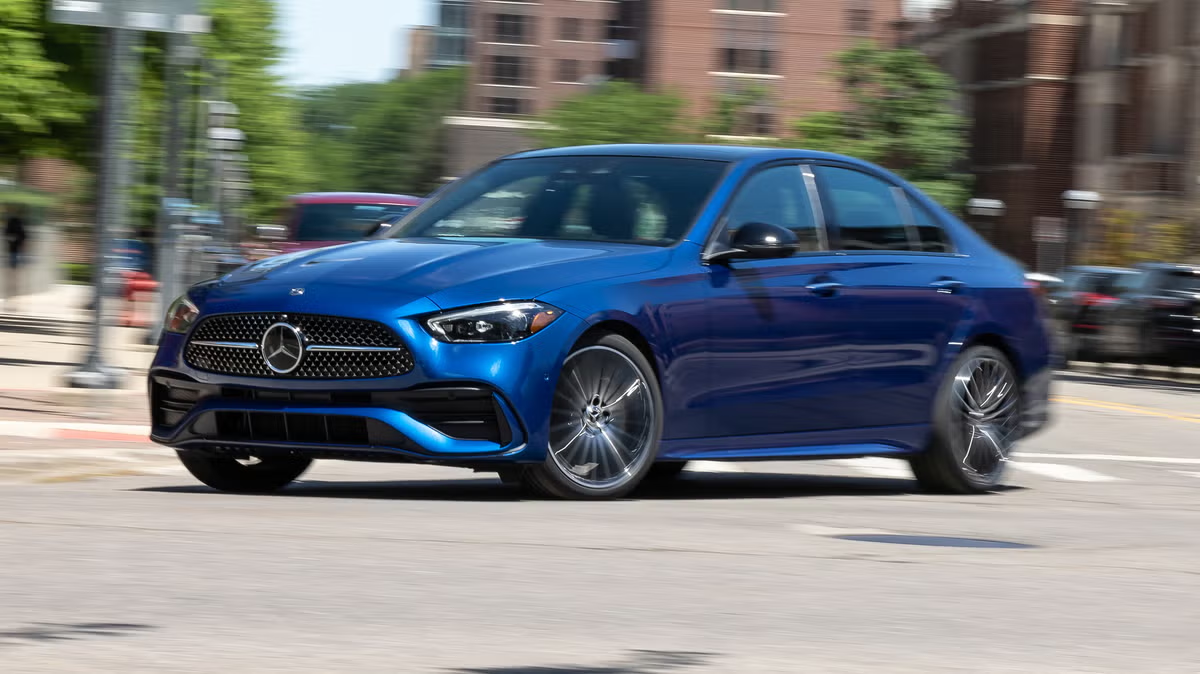
2. Mercedes-Benz C-Class
Mercedes-Benz, one of the most prestigious names in the luxury automotive world, offers the C-Class as a compact luxury sedan that embodies elegance, performance, and advanced technology. Despite its premium status, the C-Class warranty coverage is somewhat limited compared to many other vehicles in both luxury and mainstream segments.
Mercedes-Benz’s basic warranty covers 4 years or 50,000 miles, which is shorter than the 5-year or longer bumper-to-bumper warranties now offered by some competitors. This warranty protects against defects in materials and workmanship but excludes normal wear items and routine maintenance, which can be costly given the C-Class’s sophisticated engineering.
The powertrain warranty on the C-Class also lasts for only 4 years or 50,000 miles, matching the basic coverage period. While Mercedes-Benz powertrains are generally regarded as reliable, the relatively short warranty term offers less long-term protection against expensive repairs, such as transmission issues or engine component failures.
This can be a considerable factor for owners who intend to retain their vehicles beyond the warranty period, as repairs on German luxury cars tend to be more expensive due to specialized parts and labor requirements.
Mercedes-Benz does provide roadside assistance for the duration of the basic warranty, which is useful during the covered years but disappears thereafter. This assistance package includes towing, lockout service, battery jump-start, and emergency fuel delivery.
While helpful, it is more limited in duration than offerings from some brands that extend roadside coverage to 5 years or more. The corrosion warranty on the C-Class is 4 years with unlimited mileage, which is quite minimal compared to many competitors that offer corrosion protection of 5 to 7 years or longer.
Given the cost and difficulty of repairing rust damage on luxury vehicles, this short coverage can be a downside for owners in rust-prone climates.
Mercedes-Benz’s relatively modest warranty coverage reflects a brand strategy focused on luxury and driving experience rather than warranty generosity. While buyers may be attracted to the C-Class for its performance and prestige, the limited warranty terms place the onus on owners to invest in maintenance and repairs after the initial few years.
This approach contrasts with some newer entrants and even established competitors who use longer warranties as a competitive advantage to lower perceived ownership risks. For budget-conscious luxury buyers, the C-Class warranty may feel less appealing compared to vehicles offering longer-term protection.
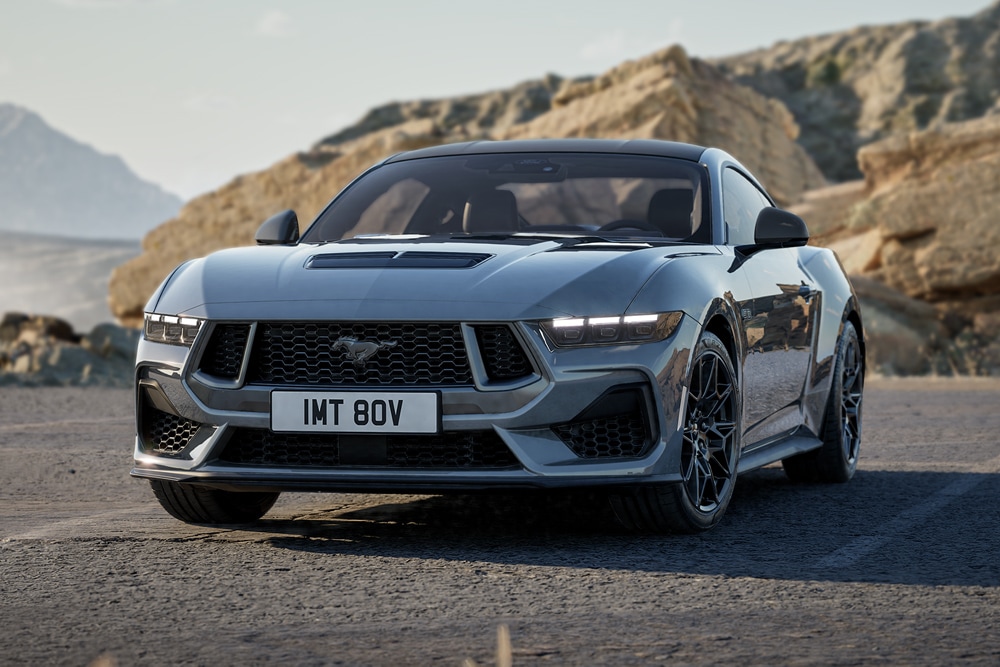
3. Ford Mustang
The Ford Mustang is an iconic American muscle car celebrated for its powerful engines, aggressive styling, and rich heritage. Despite its popularity and performance appeal, the Mustang’s warranty coverage is relatively modest in scope and duration, especially when compared to newer models from competitors who have upped their warranty offerings in recent years.
The Mustang’s basic warranty is 3 years or 36,000 miles, which aligns with the industry standard for many vehicles but falls short when stacked against rivals that provide extended bumper-to-bumper protection.
In terms of powertrain warranty, Ford offers 5 years or 60,000 miles for the Mustang, a slight improvement over the basic warranty but still shorter than the decade-long coverage offered by some other manufacturers. Given the Mustang’s performance-oriented powertrains, including turbocharged four-cylinder and V8 engines, the potential repair costs for major drivetrain components can be substantial.
The limited duration of powertrain coverage means owners might face significant repair bills once the warranty expires, especially if the vehicle is driven aggressively or accumulates high mileage.
Roadside assistance for the Mustang lasts for 5 years or 60,000 miles, which is a positive feature that provides valuable support in emergencies such as breakdowns, flat tires, and lockouts. This coverage helps offset some of the risks associated with owning a performance car, which might be more prone to wear or mechanical issues due to spirited driving.
However, the corrosion warranty remains minimal at 5 years with no mileage limit, which is average but not generous by today’s standards. Rust and corrosion can impact the Mustang’s structural integrity and aesthetics, particularly in regions where road salt is prevalent, making this limited coverage a concern for some buyers.
Ford’s approach to warranty on the Mustang emphasizes tradition and value rather than extended coverage, relying on the car’s strong enthusiast base and brand loyalty to maintain appeal. While the Mustang’s warranty may be adequate for many buyers, it does not provide the level of long-term protection found in vehicles from manufacturers that have prioritized warranty terms as a key selling point.
As the market shifts toward longer and more comprehensive warranties, Ford’s relatively conservative coverage for the Mustang may become a notable disadvantage for buyers concerned about total cost of ownership.
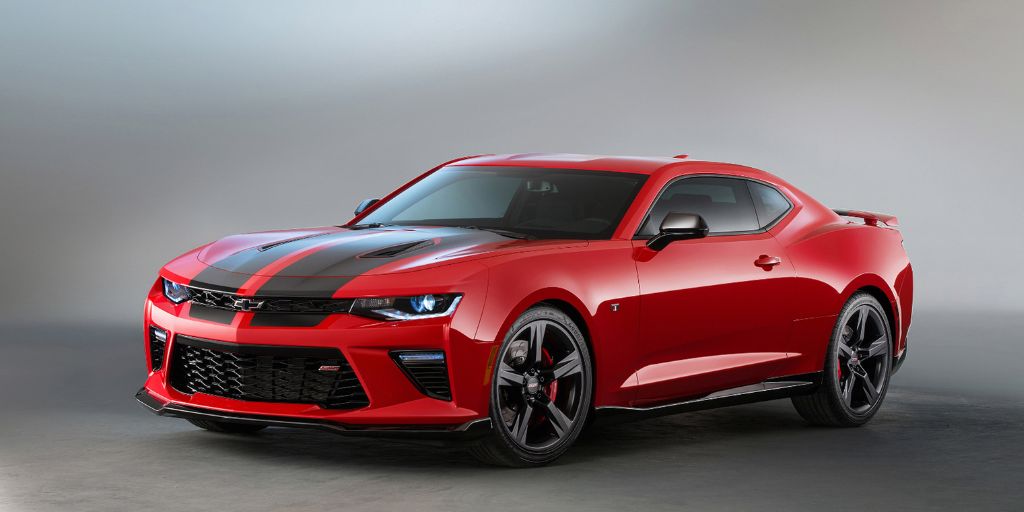
4. Chevrolet Camaro
The Chevrolet Camaro is another quintessential American muscle car with a storied history and a reputation for bold design and high-performance powertrains. Like its direct competitor, the Ford Mustang, the Camaro offers relatively minimal warranty coverage, which can be a drawback given the potential maintenance and repair costs associated with high-performance vehicles.
The Camaro’s basic warranty lasts only 3 years or 36,000 miles, providing the standard level of protection but not extending beyond what many economy cars receive. This relatively short bumper-to-bumper warranty may leave owners vulnerable to expensive repairs outside the initial ownership years.
Chevrolet offers a powertrain warranty of 5 years or 60,000 miles on the Camaro, which again is standard but not exceptional. Muscle cars often experience more wear on engines, transmissions, and drivetrains due to the nature of spirited driving and higher performance demands.
The relatively limited powertrain warranty means that owners who drive their Camaros hard or keep them beyond five years might face costly mechanical repairs without manufacturer support.
Roadside assistance coverage lasts for 5 years or 60,000 miles, which provides useful emergency support such as towing, lockout assistance, and flat tire changes. This benefit is helpful for muscle car owners who may drive their vehicles in various conditions and locations.
However, the Camaro’s corrosion warranty is modest, typically 3 years or 36,000 miles, which is quite short and less generous than many competitors. Rust and corrosion protection is especially important for performance vehicles where structural rigidity and body integrity contribute to handling and safety, making this limited coverage less reassuring.
Chevrolet’s warranty on the Camaro reflects a balance between affordability and standard protection but does not push the envelope in terms of long-term coverage or customer assurance.
While the Camaro continues to attract buyers with its style and performance credentials, those concerned about potential repair costs and long-term reliability might view the warranty as a weak point. In comparison to brands that have expanded warranty terms to build buyer confidence, Chevrolet’s conservative approach with the Camaro may feel outdated to some consumers.
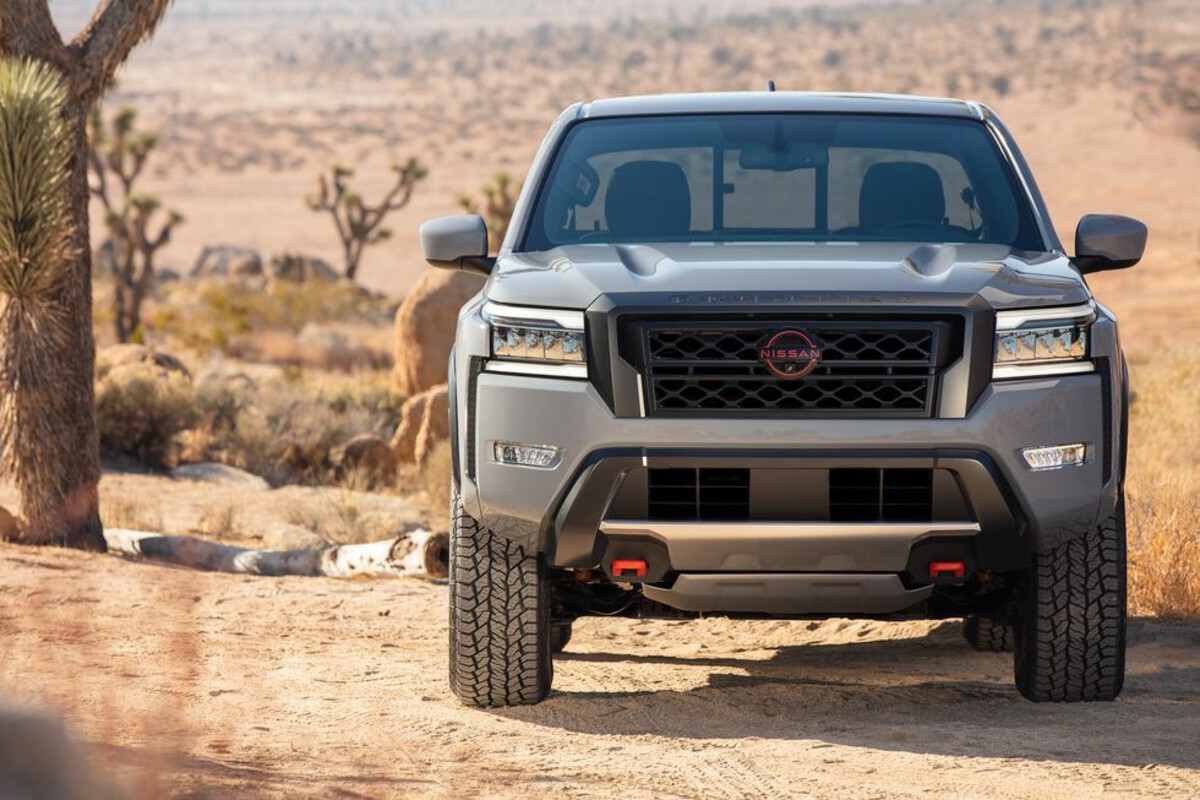
5. Nissan Frontier
The Nissan Frontier is a midsize pickup truck known for its ruggedness and affordability, often appealing to buyers seeking a no-nonsense workhorse at a reasonable price. However, when it comes to warranty coverage, the Frontier is notably minimal, especially compared to newer trucks from other manufacturers that have extended their warranty terms to match growing consumer expectations.
Nissan provides a basic bumper-to-bumper warranty of only 3 years or 36,000 miles on the Frontier, which is standard but not generous. This limited timeframe means many owners could soon face repair costs outside the warranty period, which can be significant for trucks used in demanding conditions.
The powertrain warranty extends to 5 years or 60,000 miles, again a fairly typical offering but not expansive compared to rivals who now commonly offer 7 or even 10 years of powertrain protection.
Given that trucks often endure heavy use and rough terrain, the relatively short powertrain warranty leaves Frontier owners at risk of costly repairs, particularly to engines, transmissions, or drivetrain components. This shorter coverage duration can be a financial burden for truck buyers who rely on their vehicles for work and daily driving.
Nissan’s roadside assistance for the Frontier is limited to 3 years or 36,000 miles, which is short and may leave owners without support in the crucial years after warranty expiration. Considering the Frontier’s use in potentially remote or rugged areas, extended roadside assistance could be a significant value-add, but Nissan’s limited offering falls short of this.
Additionally, the corrosion warranty covers 5 years with unlimited mileage, which is average but not exceptional, especially for a truck that might be exposed to harsh weather, road salt, or off-road conditions.
Overall, the Nissan Frontier’s warranty coverage reflects a more traditional approach that prioritizes initial affordability over long-term protection. While the truck’s proven design and reliability record may reassure some buyers, the limited warranty terms do not provide as much financial safety net as extended warranties offered by competitors.
For customers who intend to keep their trucks long-term or rely heavily on them for work, the Frontier’s minimal warranty coverage may present a significant downside in terms of potential maintenance and repair expenses.
ALSO READ: 5 Cars That Still Drive Like New at 10 Years and 5 That Feel Ancient
In today’s automotive market, warranty coverage has evolved from a mere afterthought into a fundamental component of vehicle value and buyer peace of mind. The stark contrast between vehicles offering generous warranties and those with minimal coverage underscores the importance of understanding what protections come standard with your purchase.
The five vehicles highlighted for their extensive warranty terms—such as the Hyundai Tucson, Kia Telluride, and Genesis G70—illustrate how manufacturers can leverage warranty policies as a powerful statement of confidence in their engineering and commitment to customers.
These warranties extend far beyond the industry norm, often covering powertrain components for up to 10 years or 100,000 miles, providing not only financial security but also increasing the appeal and resale value of the vehicles.
Generous warranties help reduce ownership costs by shifting the burden of major repairs from the consumer to the manufacturer during critical years of vehicle use. They foster greater customer loyalty, elevate brand reputation, and reflect a proactive approach to quality assurance.
For many buyers, such warranties transform vehicles from mere modes of transportation into trusted companions that come with a built-in safety net.
Whether it’s the comprehensive bumper-to-bumper coverage, lengthy corrosion protection, or inclusive roadside assistance, these extended warranties offer a comprehensive safety net that alleviates anxiety over mechanical failures and repair expenses.
On the other hand, vehicles with minimal warranty coverage, including notable models like the BMW 3 Series, Mercedes-Benz C-Class, and iconic muscle cars such as the Ford Mustang and Chevrolet Camaro, present a different ownership dynamic.
While these vehicles may boast performance, style, or brand prestige, their relatively limited warranty terms place greater responsibility on owners to cover repairs beyond a short window.
This can translate into higher long-term ownership costs and greater financial uncertainty, especially for vehicles with complex mechanical systems or high-performance engines prone to wear. In these cases, owners must often weigh the appeal of brand heritage and driving excitement against the risk of costly repairs outside warranty.
Minimal warranty terms also highlight differences in manufacturer philosophies. Premium brands may rely more heavily on their reputation for quality and exclusivity rather than on offering extended coverage, while muscle car manufacturers might count on enthusiast loyalty to mitigate concerns about ownership costs.
However, as consumer expectations shift toward longer, more comprehensive warranties, even these traditional players face pressure to revisit their policies or risk losing market share to competitors who prioritize warranty value.
For prospective buyers, the choice between a vehicle with generous warranty coverage and one with minimal protection can significantly impact long-term satisfaction and financial outcomes. A robust warranty is more than a marketing feature—it’s a practical safeguard that can reduce stress and cost over the life of the vehicle.
When purchasing a vehicle, it is critical to look beyond the sticker price and consider the warranty terms as a crucial part of the total ownership package. Doing so empowers consumers to select vehicles that align not only with their style and performance preferences but also with their desire for reliability and peace of mind.
In summary, understanding the nuances of vehicle warranties offers valuable insights into the overall value and risk associated with different cars. By choosing models with strong, comprehensive warranty coverage, buyers can enjoy years of worry-free driving and better financial predictability.
Conversely, those opting for vehicles with minimal warranties should prepare for the possibility of higher maintenance costs and more responsibility in managing repairs. Whether you prioritize long-term protection or are willing to trade coverage for other attributes, a clear grasp of warranty differences is essential for making informed automotive decisions in today’s diverse and competitive market.
